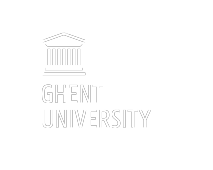Speaker
Description
Protoclusters are progenitors of galaxy clusters at the present day and are important for studying how halo mass and stellar mass assemble in the early universe. Tracing signposts that are expected to live in dense regions is a widely adopted method to identify protoclusters. Bright dusty star-forming galaxies (DSFG) are one of these signposts. Hyperluminous infrared galaxies (HLIRGs), which are extremely massive and show extreme levels of dusty star formation activity and/or black hole accretion, are expected to live in dense regions with massive halos. We study the small-scale environment of the largest HLIRG sample to date and investigate whether they predominantly live in overdense regions. We explore the surface density of Herschel-detected sources around HLIRGs and compare with that around random positions, in order to find out whether there exists an overdensity of star-forming galaxies in HLIRG environment. Then, we compare the spatial distribution of neighbours around HLIRGs with that around randomly selected galaxies using a deep IRAC-selected catalogue with good-quality photometric redshifts. We also use a redshift-matched quasar sample and submillimeter galaxy (SMG) sample to validate our method, as previous clustering studies have reported the clustering nature of these populations and measured the host halo mass. Moreover, we adopt Friends of Friends (FOF) algorithm to seek (proto)clusters which host our HLIRGs. We find that HLIRGs tend to have more star-forming neighbours within 100′′ projected radius than a random galaxy at a 2.3σ significance. HLIRG neighbours are brighter than random neighbours, with median 250 μm flux density of 10.9 mJy compared with 9.6 ± 0.3 mJy. We only find weak excess of HLIRG spatial neighbours compared with random galaxy neighbours, mainly influenced by photometric redshift uncertainty and survey depth. Finally, we select and present a list of 51 most promising protocluster candidates that are ideal as targets for future follow-up observations.

